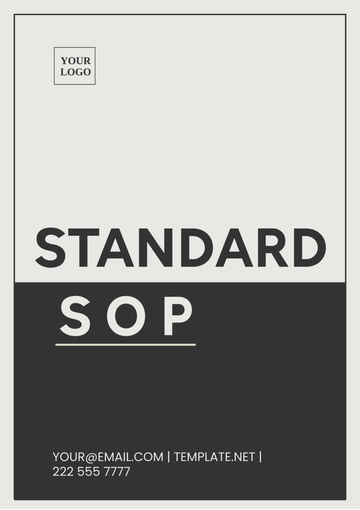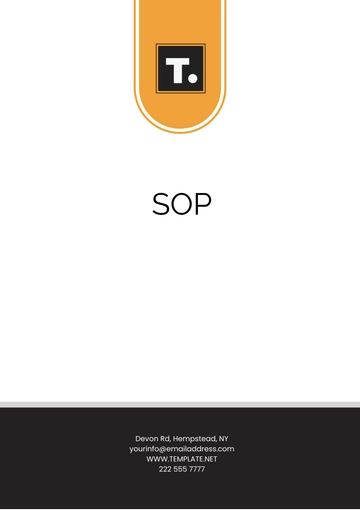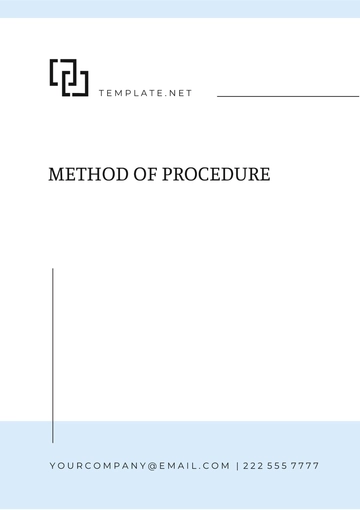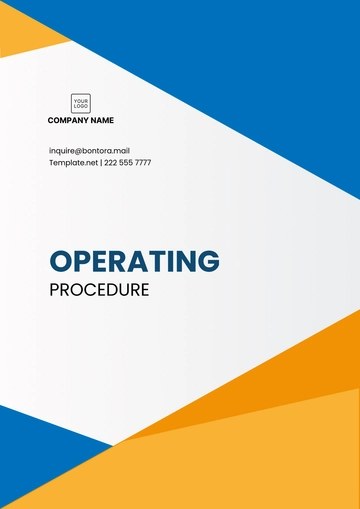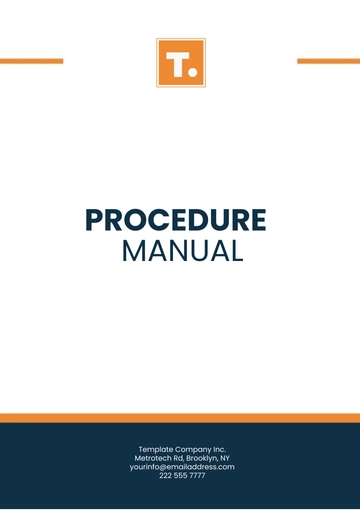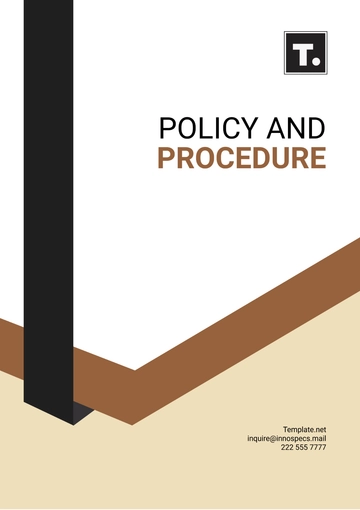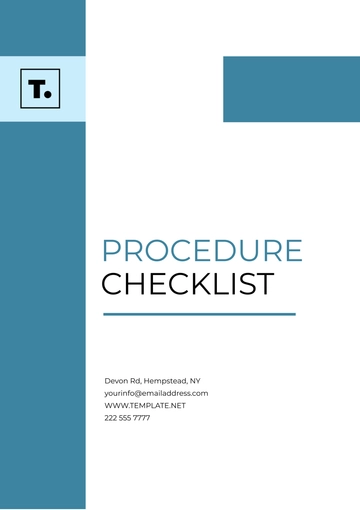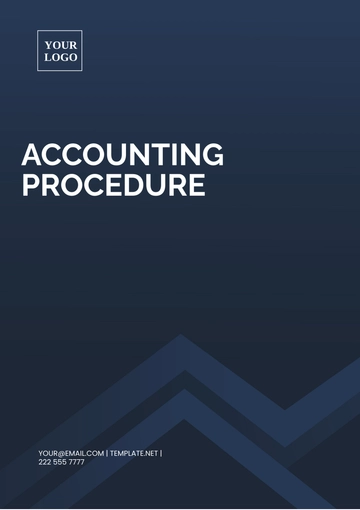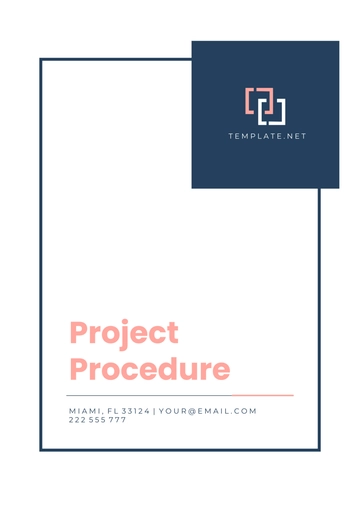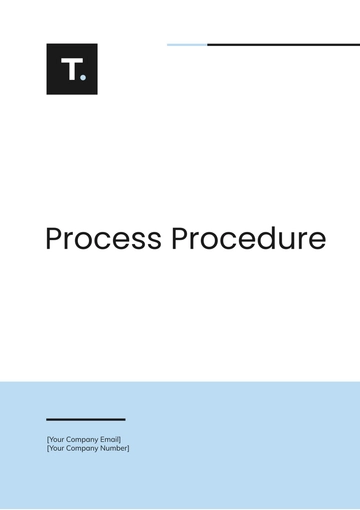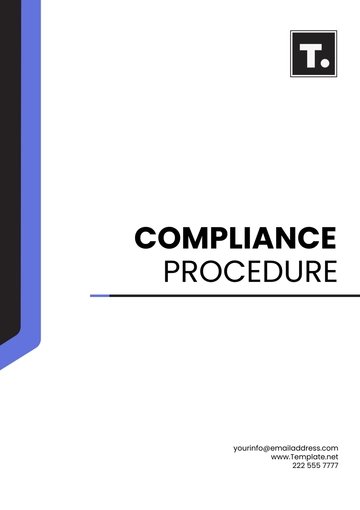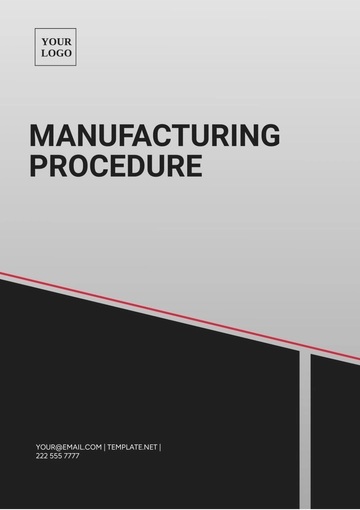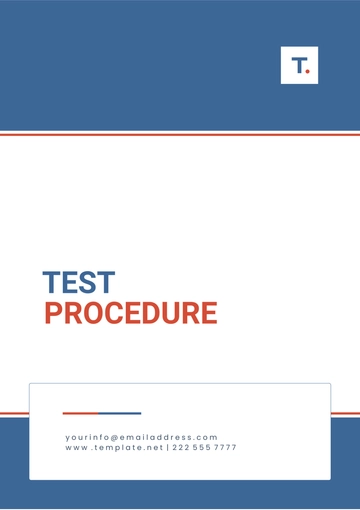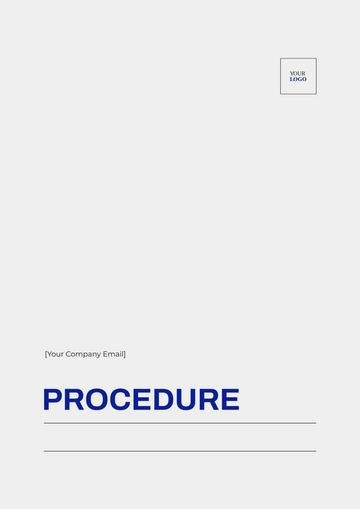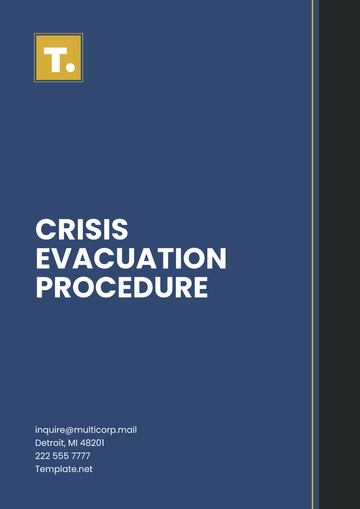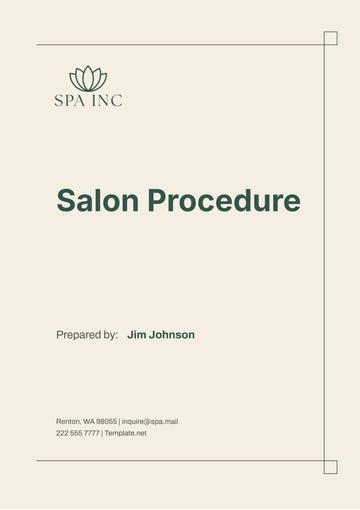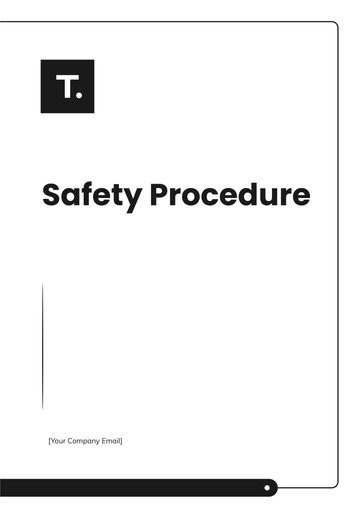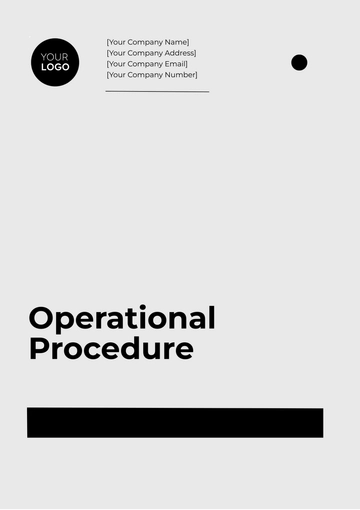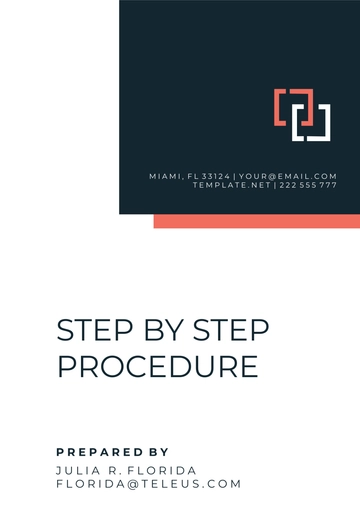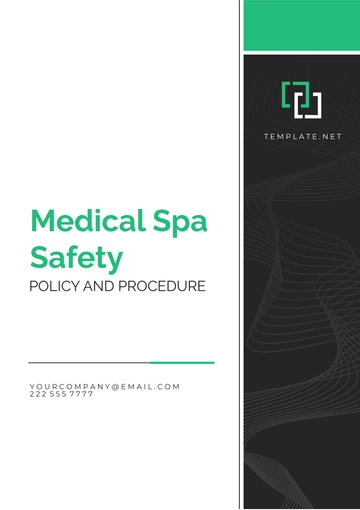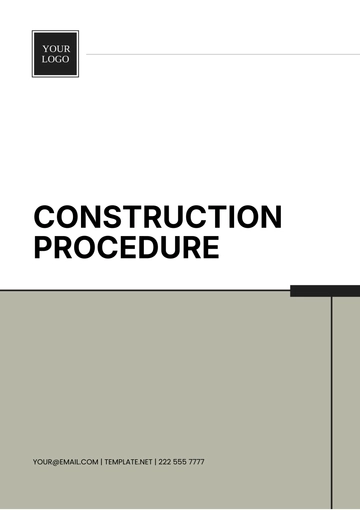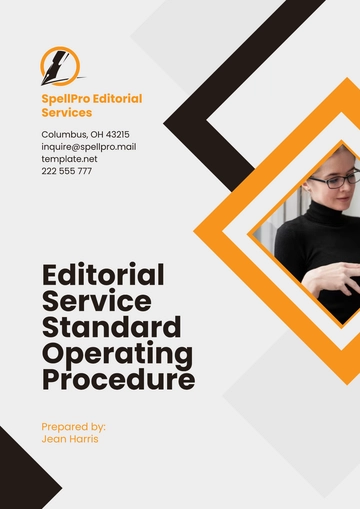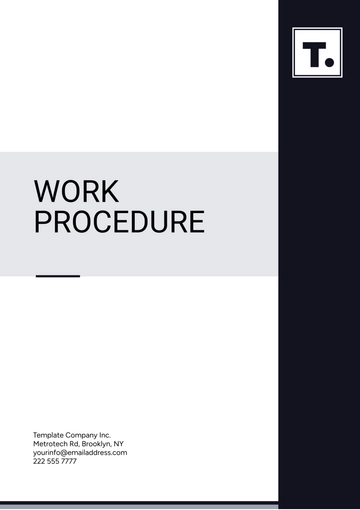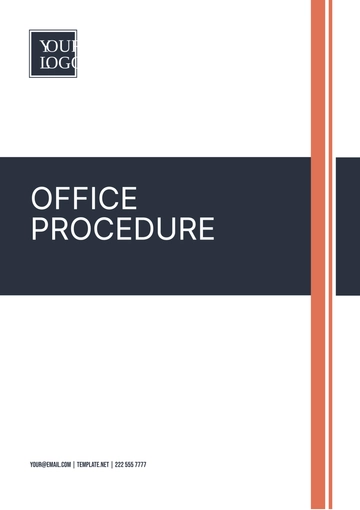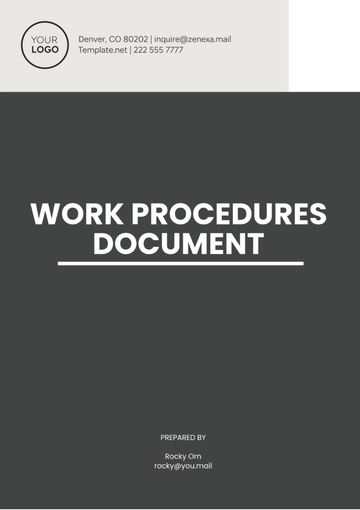Free Agriculture Compliance Procedure

I. Introduction
A. Purpose of the Compliance Procedure
The Agriculture Compliance Procedure serves to ensure that [Your Company Name]'s agricultural operations adhere to all relevant federal, state, and local regulations. By establishing clear guidelines and responsibilities, this procedure aims to promote environmental sustainability, uphold worker safety standards, and maintain high-quality agricultural products. It underscores our commitment to compliance as a core component of our operational ethos, fostering trust with stakeholders and regulatory authorities.
B. Scope of Application
This procedure applies to all facets of agricultural activities conducted under the auspices of [Your Company Name], encompassing crop cultivation, livestock management, and processing operations. It extends across all operational sites and facilities, ensuring uniformity in compliance practices and regulatory adherence throughout the organization.
C. Definitions and Key Terms
Compliance: The act of adhering to laws, regulations, and industry standards applicable to agricultural practices.
Regulatory Agencies: Government bodies tasked with overseeing and enforcing agricultural laws, such as the USDA, EPA, and local health departments.
Non-Compliance: Any deviation from established regulatory requirements that may result in legal repercussions or operational disruptions.
II. Regulatory Framework
A. Overview of Agricultural Regulations
[Your Company Name] operates within a complex regulatory landscape that includes environmental protection, food safety, labor standards, and land use regulations. Compliance with these regulations is essential to mitigate risks, ensure sustainability, and maintain regulatory compliance certifications that are vital for business operations.
B. Relevant Laws and Statutes
Environmental Laws
The regulations that govern various aspects of agricultural and environmental practices include those related to water usage, pesticide application, soil conservation, and air quality. Examples of such regulations are the Clean Water Act and the Endangered Species Act, which provide guidelines and standards to ensure responsible management and protection of natural resources and ecosystems.
Occupational Safety and Health Laws
Standards that are enforced by the Occupational Safety and Health Administration (OSHA) aim to protect workers from various hazards that may occur within agricultural operations.
Food Safety Regulations
The guidelines established under the Food Safety Modernization Act (FSMA) are designed to ensure the safety of agricultural products throughout their entire journey from the farm to the table. These guidelines encompass a range of practices including the proper handling of food, safe processing methods, and appropriate distribution techniques to minimize risks and safeguard public health.
C. Regulatory Agencies and Authorities
[Your Company Name] maintains proactive engagement with regulatory agencies such as the EPA, USDA, and local health departments. Compliance officers monitor regulatory updates and collaborate with these agencies to interpret and implement regulations effectively. This partnership ensures that [Your Company Name] stays informed of evolving requirements and maintains a proactive approach to compliance management.
III. Compliance Responsibilities
A. Roles and Responsibilities
Agricultural Managers
The individual is tasked with the comprehensive responsibility of overseeing compliance within the various departments they manage. This includes ensuring that all activities and operations adhere strictly to the relevant regulatory requirements. Additionally, this person is charged with the implementation of best practices aimed at fostering and promoting a culture of compliance throughout the organization.
Compliance Officers
Assigned the responsibilities of monitoring regulatory changes, conducting internal audits, and providing comprehensive guidance to operational teams on matters related to compliance.
Department Heads
Those holding responsibility within their respective departments are tasked with enforcing compliance policies. This involves multiple critical duties, including but not limited to conducting regular training sessions to ensure that all team members are well-versed in the necessary regulations and procedures. Furthermore, they must also maintain accurate and up-to-date compliance records, ensuring that all actions and protocols adhere to established guidelines and standards.
B. Training and Awareness
Training Programs
[Your Company Name] offers an array of detailed training programs designed to thoroughly educate employees on a variety of essential topics. These programs cover everything from understanding and complying with regulatory requirements, implementing safe work practices, to fostering a sense of environmental stewardship among the team. Recognizing that different roles within an organization have distinct needs, [Your Company Name] tailors these training programs to suit the specific job roles and responsibilities of each employee. This customization ensures that the training remains both relevant and highly effective, maximizing the practical application of the knowledge gained.
Continuous Education
Employees receive regular updates on regulatory changes through workshops, seminars, and online resources. Continuous education ensures that employees remain informed and compliant with evolving regulatory standards, fostering a proactive approach to compliance management.
C. Documentation and Record-Keeping
Record Management Systems
[Your Company Name] maintains robust record-keeping systems to document compliance activities, including permits, inspections, and training records. These systems facilitate transparency and accountability during audits and regulatory inquiries, demonstrating [Your Company Name]'s commitment to compliance and regulatory adherence.
Compliance Documentation Requirements
Documentation procedures are standardized across all departments to ensure consistency and accuracy. Compliance documentation is regularly reviewed and updated to reflect current practices and regulatory changes, supporting continuous improvement in compliance management.
IV. Environmental Compliance
A. Soil and Water Management
Irrigation Practices
[Your Company Name] implements sustainable irrigation practices that optimize water use efficiency and minimize environmental impact. These practices include the use of drip irrigation systems, soil moisture sensors, and scheduling irrigation based on crop water requirements and weather conditions.
Water Usage Monitoring
Regular monitoring of water usage levels and adherence to permitted limits ensures compliance with local water resource regulations. [Your Company Name] tracks water consumption data and implements water conservation measures to mitigate environmental impacts and maintain regulatory compliance.
B. Pesticide and Chemical Management
Application Procedures
Pesticides and chemicals are applied according to manufacturer guidelines and regulatory requirements. [Your Company Name] employs integrated pest management strategies to minimize chemical usage and reduce environmental risks. Application records are meticulously maintained to track chemical usage, application rates, and compliance with safety protocols.
Storage and Disposal Guidelines
Chemical storage facilities are designed and maintained to prevent leaks, spills, and contamination. [Your Company Name] adheres to strict guidelines for chemical storage, handling, and disposal to protect soil, water resources, and wildlife habitats from potential environmental harm.
C. Wildlife and Habitat Protection
Conservation Practices
[Your Company Name] implements habitat conservation practices, such as maintaining buffer zones around water bodies and preserving native vegetation. These practices promote biodiversity, support ecosystem services, and comply with regulatory requirements for habitat protection and wildlife conservation.
Endangered Species Management
[Your Company Name] collaborates with wildlife agencies to identify and protect habitats of endangered species. Habitat assessments and species surveys are conducted to ensure compliance with regulations, and conservation plans are developed to mitigate potential impacts on protected species and their habitats.
V. Health and Safety
A. Occupational Health and Safety
Worker Protection Standards
[Your Company Name] prioritizes the health and safety of its workforce by providing comprehensive training on hazard recognition, safe work practices, and the proper use of personal protective equipment (PPE). Regular safety inspections and audits are conducted to identify and mitigate workplace hazards, ensuring compliance with OSHA standards and promoting a culture of safety.
Safety Training Programs
Employees participate in routine, comprehensive safety training sessions that extensively cover various critical areas, including detailed emergency procedures, thorough protocols for handling chemicals, and best practices for maintaining ergonomics in the workplace. The training materials used in these sessions are meticulously tailored to align with the specific job roles and responsibilities of each employee, ensuring that the content is highly relevant and effective. This customized approach is designed to promote and uphold a safe work environment, addressing the unique needs and potential hazards associated with different positions within the organization.
B. Equipment and Machinery Safety
Maintenance Procedures
[Your Company Name] adheres to stringent maintenance schedules for agricultural equipment and machinery to ensure safe operation and compliance with safety standards. Routine inspections, lubrication, and repairs are conducted to prevent equipment failures and reduce the risk of workplace accidents.
Use of Personal Protective Equipment (PPE)
Employees are trained to use appropriate PPE, such as gloves, safety goggles, and respirators, when handling hazardous materials or operating machinery. PPE usage is enforced through workplace policies and procedures to minimize exposure risks and ensure compliance with safety regulations.
VI. Quality Assurance
A. Product Quality Standards
Food Safety Regulations
[Your Company Name] adheres to stringent food safety regulations outlined in the Food Safety Modernization Act (FSMA). This includes implementing Hazard Analysis and Critical Control Points (HACCP) plans, conducting regular inspections, and ensuring that all agricultural products meet quality and safety standards from farm to consumer.
Quality Control Procedures
Quality assurance measures are integrated throughout the production process to maintain product consistency and meet customer expectations. [Your Company Name] conducts rigorous testing, sampling, and analysis to verify product quality and compliance with regulatory requirements.
B. Traceability and Recall Procedures
Product Tracking Systems
[Your Company Name] maintains robust traceability systems that track the origin, processing, and distribution of agricultural products. This allows for swift identification and retrieval of products in the event of a recall, ensuring timely response and mitigation of potential health and safety risks.
Recall Protocols
In the event of a product recall, [Your Company Name] activates detailed recall protocols to notify stakeholders, including customers, suppliers, and regulatory agencies. These protocols include communication strategies, traceback procedures, and corrective actions to prevent recurrence and uphold consumer trust.
VII. Compliance Monitoring and Auditing
A. Monitoring Procedures
Regular Inspections
[Your Company Name] conducts scheduled inspections of agricultural facilities, equipment, and practices to assess compliance with regulatory standards. Inspections cover areas such as environmental impact, worker safety, and operational practices to identify areas for improvement and ensure adherence to regulatory requirements.
Environmental Monitoring
Monitoring of environmental indicators, including soil quality, water quality, and air emissions, is performed to evaluate the effectiveness of environmental management practices and compliance with regulatory limits.
B. Auditing and Evaluation
Internal Audits
[Your Company Name] conducts regular internal audits to evaluate compliance performance, identify non-conformities, and implement corrective actions. Internal auditors review documentation, conduct interviews, and assess operational practices to ensure alignment with regulatory requirements and organizational policies.
External Audits and Certifications
External audits by third-party auditors are conducted periodically to verify compliance with industry standards and regulatory requirements. Certifications such as ISO standards or organic certifications demonstrate [Your Company Name]'s commitment to quality, sustainability, and compliance excellence.
VIII. Non-Compliance and Corrective Actions
A. Reporting Non-Compliance
Incident Reporting Procedures
Employees are encouraged to report compliance violations or incidents promptly using designated reporting channels. Incident reports are documented, investigated, and escalated as necessary to determine root causes and implement corrective actions.
Investigation Protocols
Thorough investigation of reported incidents is conducted to identify underlying causes and prevent recurrence. Investigations may include root cause analysis, corrective action planning, and follow-up to ensure effectiveness and compliance with regulatory requirements.
B. Corrective and Preventive Actions
Corrective Action Plans
[Your Company Name] develops comprehensive corrective action plans to address identified non-compliance issues. Plans include specific actions, responsibilities, timelines, and metrics for evaluating effectiveness. Corrective actions are implemented promptly to mitigate risks, improve compliance performance, and prevent future non-conformities.
Preventive Measures Implementation
Proactive measures are taken to identify and address potential compliance risks before they escalate. This includes ongoing risk assessments, process improvements, and training initiatives aimed at strengthening compliance culture and minimizing operational disruptions.
IX. Continuous Improvement
A. Review and Revision Process
Periodic Review Schedule
The Agriculture Compliance Procedure undergoes regular reviews to assess its effectiveness, relevance, and alignment with regulatory changes. Reviews are scheduled at predetermined intervals and may be triggered by significant regulatory updates or internal quality management reviews.
Revision Procedures
Proposed revisions to the compliance procedure are evaluated through a structured review process. Changes are reviewed by stakeholders, approved by management, and communicated to relevant personnel to ensure understanding and implementation of updated requirements.
B. Feedback and Stakeholder Engagement
Feedback Mechanisms
[Your Company Name] actively solicits feedback from employees, stakeholders, and regulatory agencies regarding compliance practices and procedures. Feedback mechanisms include surveys, meetings, and direct communication channels to capture insights and address concerns effectively.
Stakeholder Consultations
Engaging stakeholders in compliance-related discussions fosters collaboration, transparency, and mutual understanding. [Your Company Name] seeks input from industry associations, community groups, and regulatory bodies to inform decision-making and enhance compliance strategies.
X. Conclusion
A. Commitment to Compliance
[Your Company Name] remains dedicated to upholding the highest standards of regulatory compliance in its agricultural operations. By adhering to the Agriculture Compliance Procedure and fostering a culture of accountability and continuous improvement, we strive to exceed regulatory expectations, safeguard environmental resources, protect worker safety, and deliver high-quality products to our customers.
B. Future Trends and Considerations
[Your Company Name] anticipates future regulatory trends and industry developments, committing to proactive adaptation and innovation in compliance management. We will continue to monitor regulatory changes, invest in technology and training, and collaborate with stakeholders to maintain leadership in regulatory compliance and sustainable agricultural practices.
- 100% Customizable, free editor
- Access 1 Million+ Templates, photo’s & graphics
- Download or share as a template
- Click and replace photos, graphics, text, backgrounds
- Resize, crop, AI write & more
- Access advanced editor
Ensure compliance with ease using the Agriculture Compliance Procedure Template from Template.net. This editable and customizable template streamlines regulatory adherence for agricultural operations. Featuring an intuitive AI Editor Tool, it empowers users to tailor procedures to specific needs effortlessly. Simplify compliance management while maintaining high standards of environmental stewardship and worker safety with this versatile template.
